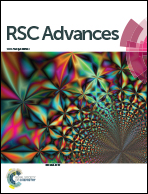Soft-templated LiFePO4/mesoporous carbon nanosheets (LFP/meso-CNSs) nanocomposite as the cathode material of lithium ion batteries†
Abstract
A novel and facile in situ soft-templated method is proposed for synthesizing a LFP/mesoporous carbon nanosheets (LFP/meso-CNSs) nanocomposite, which involves solvent evaporation induced self-assembly of triblock copolymers, with resol and inorganic salts as co-precursors of CNSs and LFP, followed by a heat treatment. The LFP/meso-CNSs nanocomposite displays an excellent high-rate capability (122.1 mA h g−1 at 5 C and 102.1 mA h g−1 at 10 C) and stable cycling property as the cathode material of lithium ion batteries, benefitting from its high electronic conductivity, open mesoporosity, and the nano-size of its active material.


 Please wait while we load your content...
Please wait while we load your content...